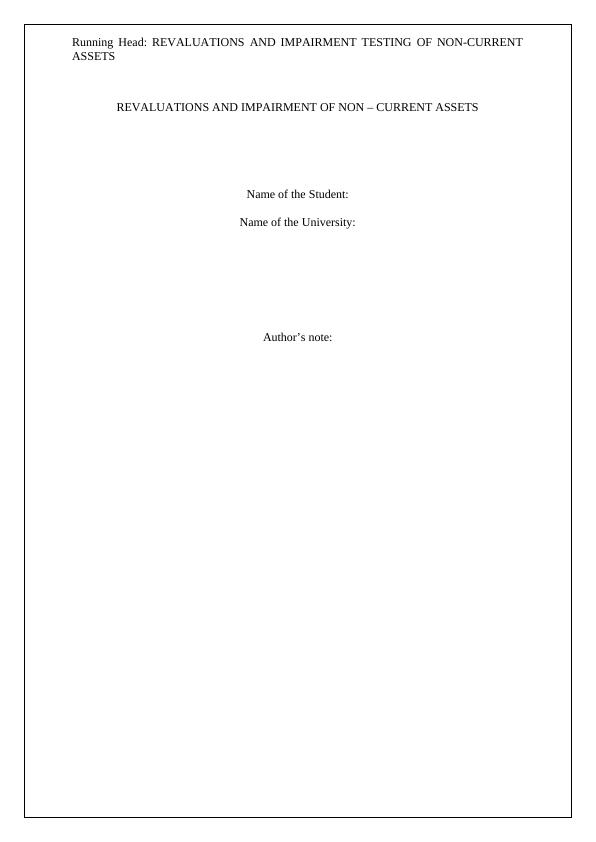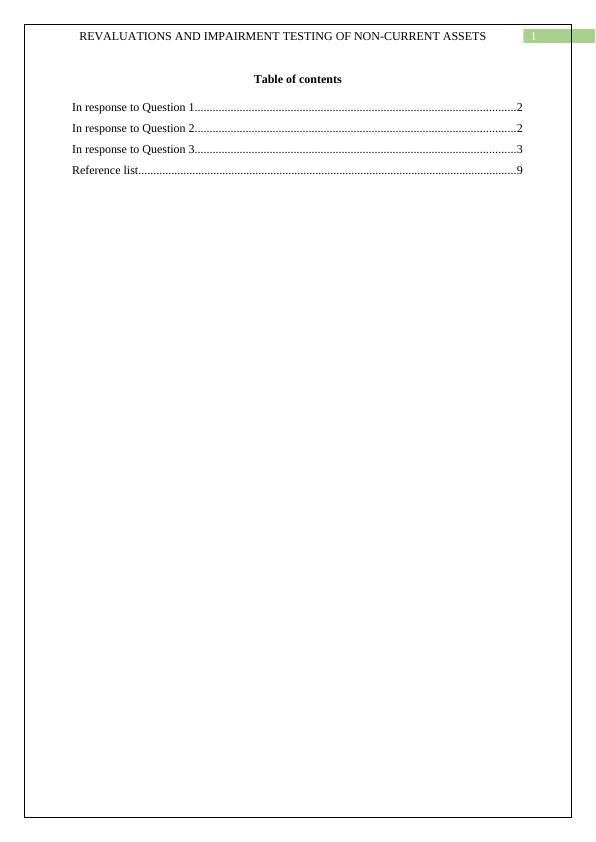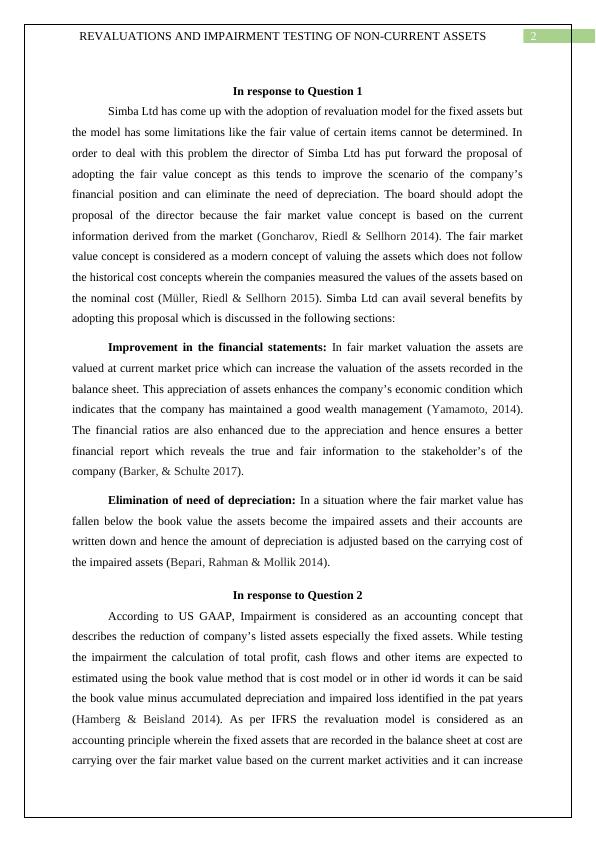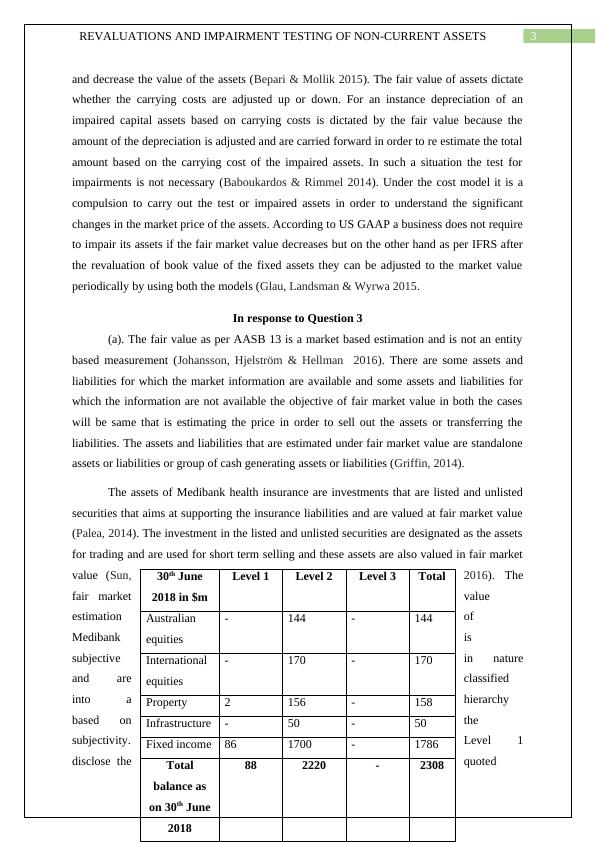Revaluations and Impairment Testing of Non-Current Assets
This is the first part of assessment task 2. You can choose to do Part A either as an individual or you can pair up with another student who is currently enrolled in the unit.
11 Pages2737 Words184 Views
Added on 2023-04-17
About This Document
This document discusses the adoption of fair market value concept for fixed assets, benefits of fair market valuation, differences between US GAAP and IFRS, disclosures related to fair value measurement, and assessment of impairment test. It also provides insights into Medibank's goodwill allocation and cash generating units.
Revaluations and Impairment Testing of Non-Current Assets
This is the first part of assessment task 2. You can choose to do Part A either as an individual or you can pair up with another student who is currently enrolled in the unit.
Added on 2023-04-17
ShareRelated Documents
End of preview
Want to access all the pages? Upload your documents or become a member.
Revaluations and Impairment Testing of Non-Current Assets
|9
|2971
|64
Revaluation and Impairment Testing of Non Current Assets
|10
|2379
|467
Impairment Testing in Accounting
|11
|2457
|399
Adoption of Fair Value Method in Accounting
|10
|2533
|172
Company Accounting
|10
|2609
|449
Company Accounting
|7
|1454
|22




